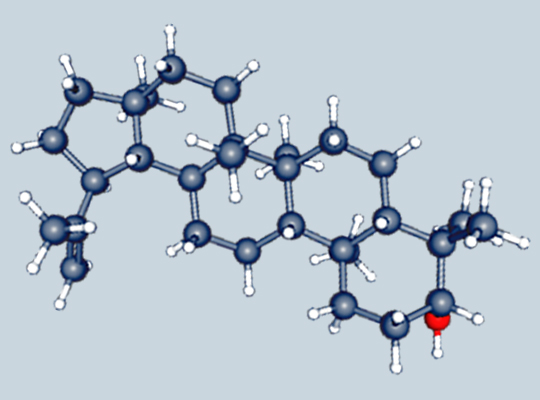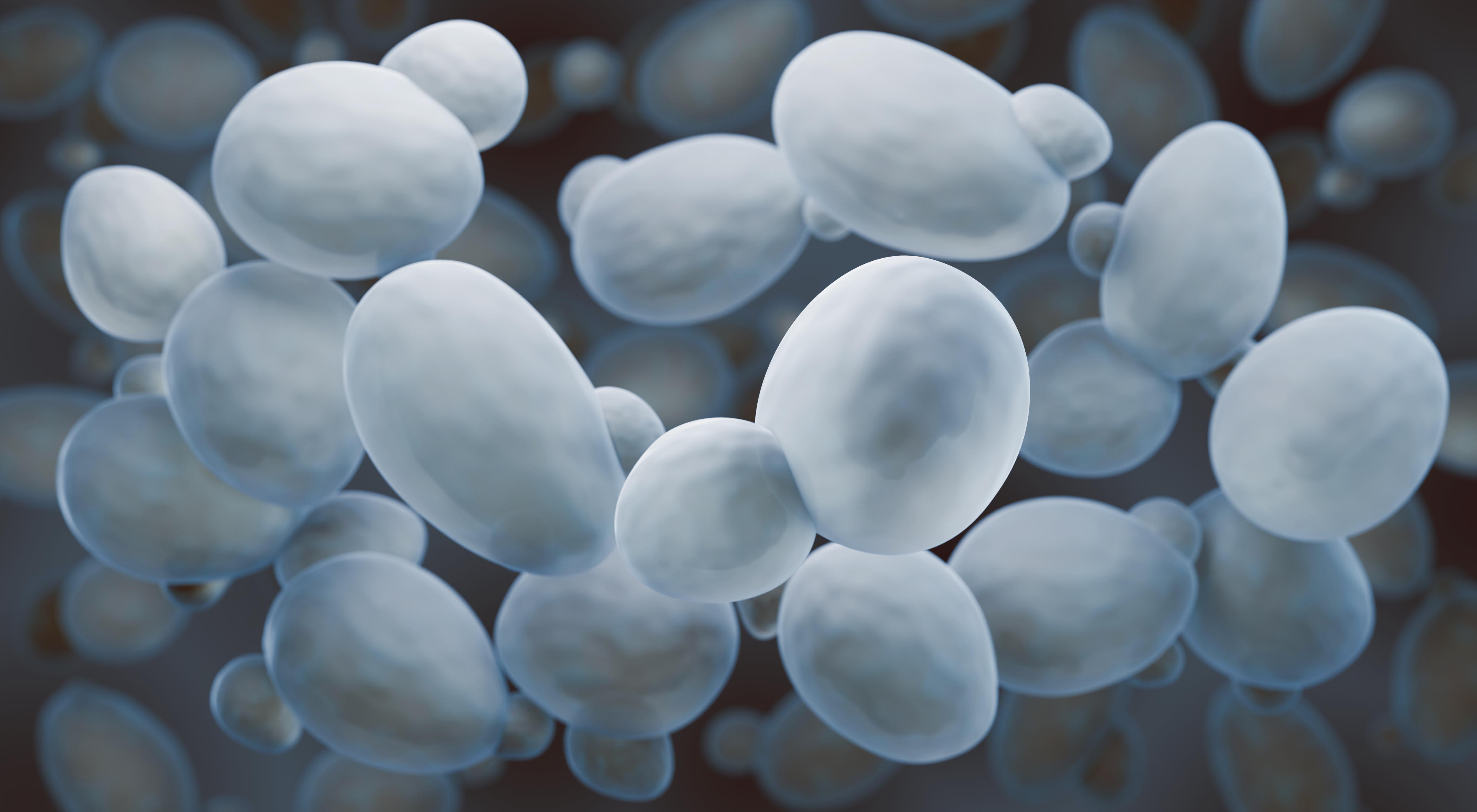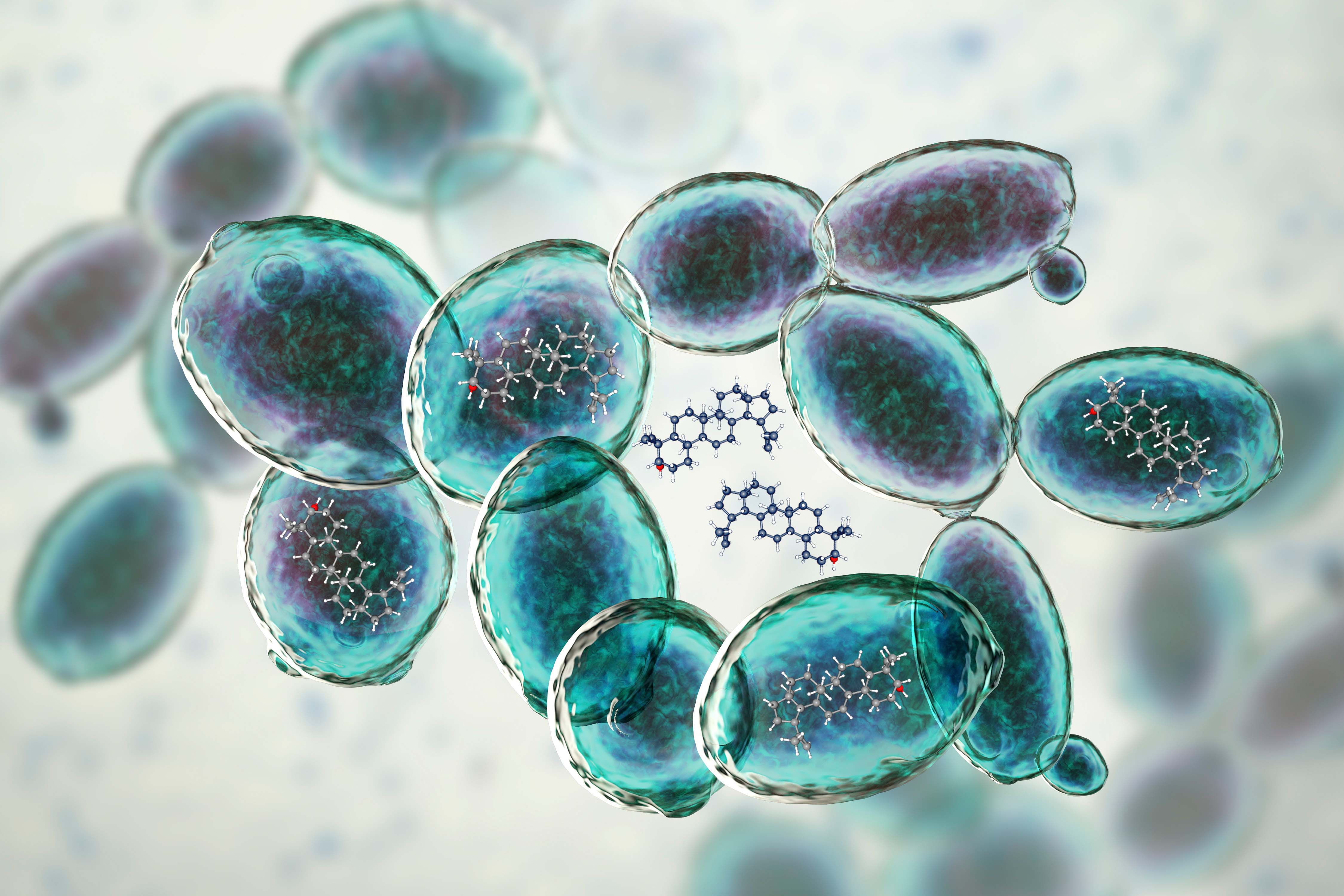


Triterpenoids, with many thousands known compounds, represent one of the largest groups of secondary metabolites in the plant kingdom. These are natural compounds produced by plants not for primary metabolism in growth, but for special tasks such as defense against pests or attracting pollinators.
During biosynthesis, more than 100 different triterpene scaffolds are synthesized from six isoprene units, which undergo further modifications, leading to this enormous structural diversity. Cyclic triterpenoids are of particular interest - they exhibit very versatile bioactive functions. The potential includes antimicrobial, antioxidant, anticarcinogenic, and antiallergic effects, making them attractive for agricultural and pharmaceutical applications.
The extraction of triterpenoids from producing plants is associated with major challenges: One problem is that these substances are often present in plants only at low concentrations. Furthermore, depending on the respective environmental conditions such as light, temperature, pest infestation or soil properties, the composition and quantities vary. In addition, isolation from plant biomass often involves considerable energy and resource consumption, which in turn conflicts with economically and ecologically reasonable exploitation. Chemical synthesis from petrochemical feedstock, on the other hand, struggles with the enormous complexity of natural products. It also leads to a large number of undesirable byproducts that make isolation difficult. Alternative, sustainable systems for production and purification are needed in the sense of the bioeconomy.
Within the framework of the "National Research Strategy Bioeconomy 2030", a consortium of SMEs and research institutions joined forces in 2020 for the "ASPIRANT" project with the aim of targeted biosynthesis of pharmaceutically relevant triterpenoids in yeasts. The consortium, coordinated by the Fraunhofer IME, combines expertise from the fields of chemistry, biology, process engineering and pharmacy and follows the entire value chain in a system-oriented manner. The focus is on the production and pharmaceutical evaluation of new substances.
Already in the first "Aspirant" project, the research network focused on the promising production option using yeast cells in a bioreactor. The goal was the directed biosynthesis of pharmaceutically relevant terpenoids in yeast. After a knowledge-based selection of suitable triterpenoids from plants, the enzymes required for biosynthesis were identified and introduced into yeasts. The enzymes oxidosqualene cyclases (OSCs) convert the naturally occurring substrate in yeast, 2,3-oxidosqualene, into the desired triterpenoid. Further enzymatic modifications, such as oxidation or incorporation of sugar residues, alter its chemical properties and bioactivity. The project uses a yeast strain with a biosynthesis pathway optimized at the Fraunhofer IME in Münster.
Using this yeast platform increased productivity and redirected metabolic flux toward the desired triterpenoid. The success was reflected in a dramatic increase in yield. In addition, the purified triterpenoids have a high purity of more than 98 percent and consistent quality: For example, in pharmaceutically relevant test systems of human cells, anti-inflammatory activity, but also novel effects were observed.
Building on these successes, the research network team was also successful in the second phase of the initiative "Tailor-made, biobased ingredients for a competitive bioeconomy" in 2023. The German Federal Ministry of Education and Research (BMBF) is funding the follow-up project "Perspective" for a period of three years. Scientists from the Technical University of Munich (TUM), Fraunhofer IME and the SMEs VivaCell Biotechnology GmbH and Phytowelt GreenTechnologies GmbH are once again pooling their expertise for "Perspective" in order to jointly expand the steps of the value chain and exploit triterpenoids as the basis for innovative pharmaceutical products.
 Fraunhofer Institute for Molecular Biology and Applied Ecology IME
Fraunhofer Institute for Molecular Biology and Applied Ecology IME